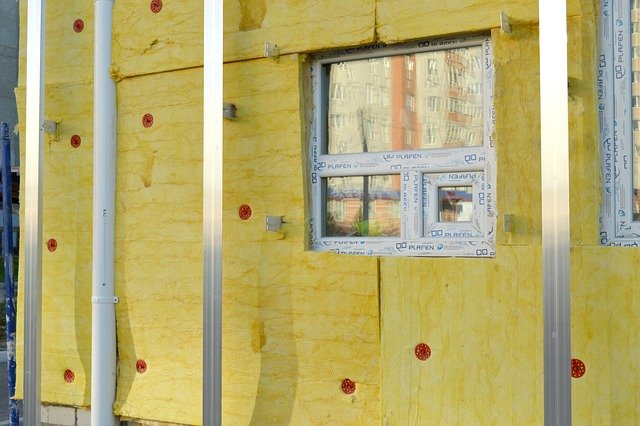Practical Guide to Attic Insulation Costs and How It Aids Comfort
Proper attic insulation serves as one of the most effective ways to improve your home's energy efficiency and indoor comfort levels. Understanding the various insulation materials, installation methods, and associated costs helps homeowners make informed decisions about this important home improvement project. From reducing energy bills to maintaining consistent temperatures throughout your living space, attic insulation offers significant benefits that extend well beyond initial installation expenses.

Attic insulation plays a crucial role in maintaining your home’s energy efficiency and creating a comfortable living environment year-round. Whether you’re dealing with drafty rooms, high energy bills, or temperature inconsistencies, upgrading your attic insulation can provide substantial improvements to your home’s performance.
Introduction to Attic Insulation
Attic insulation acts as a thermal barrier between your heated or cooled living space and the outside environment. This barrier prevents conditioned air from escaping through your roof while blocking external temperatures from affecting your indoor climate. The effectiveness of attic insulation is measured by its R-value, which indicates the material’s resistance to heat flow. Higher R-values provide better insulation performance, with most climate zones requiring R-values between R-30 and R-60 for optimal efficiency.
Types of Attic Insulation
Several insulation materials are commonly used in attic applications, each offering distinct advantages. Fiberglass batts remain the most popular choice due to their affordability and ease of installation. These pre-cut sections fit between ceiling joists and provide consistent coverage when properly installed. Blown-in cellulose insulation offers excellent coverage around obstacles and irregular spaces, making it ideal for existing homes with limited attic access. Spray foam insulation provides superior air sealing properties and higher R-values per inch, though it typically costs more than other options. Mineral wool insulation offers fire resistance and sound dampening qualities, while radiant barriers reflect heat away from your living space in hot climates.
Attic Insulation Costs
The cost of attic insulation varies significantly based on material type, square footage, and installation method. Professional installation typically ranges from $1.50 to $4.50 per square foot, depending on the chosen material and project complexity. Fiberglass batts generally cost between $0.65 and $1.20 per square foot for materials, while blown-in cellulose ranges from $0.60 to $1.80 per square foot. Spray foam insulation commands higher prices, typically costing $1.50 to $4.90 per square foot for materials and installation combined.
| Insulation Type | Provider/Brand | Cost Estimation per Sq Ft |
|---|---|---|
| Fiberglass Batts | Owens Corning | $1.50 - $2.50 |
| Blown-in Cellulose | Johns Manville | $2.00 - $3.00 |
| Spray Foam | Icynene | $3.50 - $4.50 |
| Mineral Wool | Rockwool | $2.25 - $3.25 |
Prices, rates, or cost estimates mentioned in this article are based on the latest available information but may change over time. Independent research is advised before making financial decisions.
How to Install Attic Insulation
Proper installation techniques ensure maximum performance from your attic insulation investment. Before beginning any installation, seal air leaks around electrical fixtures, plumbing penetrations, and other openings using caulk or weatherstripping. For batt insulation, measure and cut pieces to fit snugly between joists without compressing the material, as compression reduces R-value effectiveness. Blown-in insulation requires specialized equipment to distribute material evenly across the attic floor, ensuring consistent depth throughout the space. When installing any insulation type, maintain proper ventilation by keeping soffit vents clear and installing baffles to prevent insulation from blocking airflow. Safety equipment including masks, gloves, and protective clothing is essential during installation to prevent irritation from insulation fibers.
How Attic Insulation Aids Comfort
Adequate attic insulation significantly improves indoor comfort by maintaining consistent temperatures throughout your home. During winter months, proper insulation prevents warm air from escaping through the roof, reducing the workload on your heating system and eliminating cold spots in upper-level rooms. Summer benefits include blocking radiant heat from penetrating your living space, keeping indoor temperatures more stable and reducing air conditioning costs. Beyond temperature control, quality attic insulation also provides sound dampening benefits, reducing noise transmission from outside sources like aircraft, traffic, or weather events. The improved energy efficiency resulting from proper insulation typically leads to lower utility bills, with many homeowners seeing 10-50% reductions in heating and cooling costs depending on their previous insulation levels.
Attic insulation represents a valuable investment in your home’s comfort, energy efficiency, and long-term value. By understanding the available options, associated costs, and proper installation techniques, you can make informed decisions that will benefit your household for years to come. Whether you choose professional installation or tackle the project yourself, upgrading your attic insulation will likely provide noticeable improvements in indoor comfort and energy savings.




